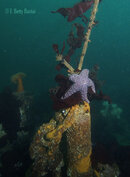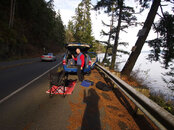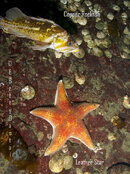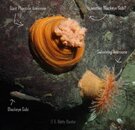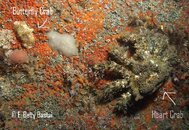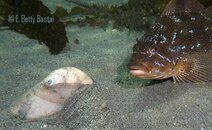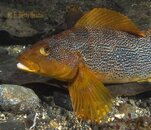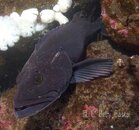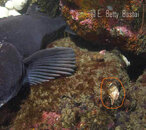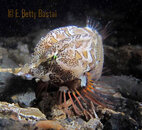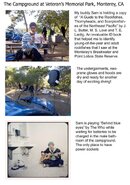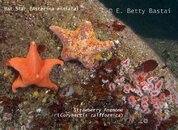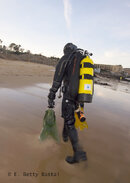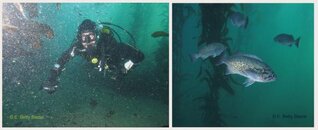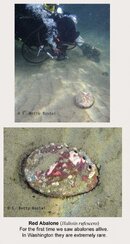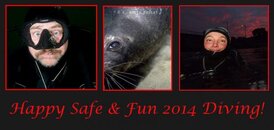Soakedlontra
Contributor
Dancing with Fishes in Arkansas
I left Kentucky on Tuesday, September 10 at noon. I drove through the hellish interstate 65 (a 'race track' for truck drivers) and reached Nashville,Tennessee, where I spent one evening listening to live music played by my friend musician Tom Mason and his music buddies Sheila Lawrence and Randy Leago. It was a great opportunity to socialize with other human beings after a week of solitary traveling. The following day I stopped in southern Arkansas to visit a family member; a couple of days later I drove to northern Arkansas to spend few days with some friends. One of them is a ranger at Blanchard Springs Caverns. She took me to North Sylamore Creek where we had a swim in its relaxing beautiful clear water and I saw for the first time in my entire life a snake hunting a fish! :shocked2:
As we were getting ready to leave I noticed a plastic water bottle on the ground. I picked it up and saw that several crayfish were trapped inside.
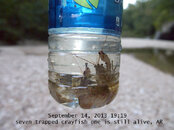
I opened the bottle to free those miserable-looking creatures. There were seven of them; unfortunately only one was still alive.
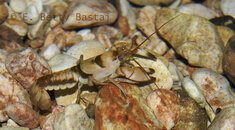
The following day, I went back to Sylamore Creek with my snorkeling gear. I picked a different swimming hole that was smaller than a 25 meter swimming pool, but very pretty. A photographer was on the bank of the creek. She was throwing pebbles into the water. At first I couldn't understand why. Then, after walking closer to her, I realized that she wanted to make gentle waves so she could photograph their reflections on a boulder. I went for a swim trying to avoid being hit by one of those pebbles and then I decided to snorkel in the opposite corner of the swimming hole away from the photographer.
The small size of the swimming hole made me believe that I could snorkel without wearing fins. So I left my Force Fins in the trunk of the car. As soon as I tried to follow a fish with my camera I regretted not having the fins on my feet. I moved in the water clumsily and my balance was, at times, all over the place. Stubbornly I kept snorkeling in that way refusing to get out of the water, walk to the parking lot and pick up those bloody fins!
I guess it was one of those days...
The swimming hole turned out to be a fascinating fresh water aquarium. I had never seen so many different species of fresh water fishes before. It must have something to do with the low level of the water in the creek, which may have forced the fishes to share such a cramped space. In any case, after being immersed in the densely clouded water of the Green River, Kentucky, snorkeling in Sylamore Creek was an unexpected magical treat:
[video=youtube_share;BZAio38XtkY]http://youtu.be/BZAio38XtkY[/video]
As we were getting ready to leave I noticed a plastic water bottle on the ground. I picked it up and saw that several crayfish were trapped inside.

I opened the bottle to free those miserable-looking creatures. There were seven of them; unfortunately only one was still alive.

The following day, I went back to Sylamore Creek with my snorkeling gear. I picked a different swimming hole that was smaller than a 25 meter swimming pool, but very pretty. A photographer was on the bank of the creek. She was throwing pebbles into the water. At first I couldn't understand why. Then, after walking closer to her, I realized that she wanted to make gentle waves so she could photograph their reflections on a boulder. I went for a swim trying to avoid being hit by one of those pebbles and then I decided to snorkel in the opposite corner of the swimming hole away from the photographer.
The small size of the swimming hole made me believe that I could snorkel without wearing fins. So I left my Force Fins in the trunk of the car. As soon as I tried to follow a fish with my camera I regretted not having the fins on my feet. I moved in the water clumsily and my balance was, at times, all over the place. Stubbornly I kept snorkeling in that way refusing to get out of the water, walk to the parking lot and pick up those bloody fins!
I guess it was one of those days...

The swimming hole turned out to be a fascinating fresh water aquarium. I had never seen so many different species of fresh water fishes before. It must have something to do with the low level of the water in the creek, which may have forced the fishes to share such a cramped space. In any case, after being immersed in the densely clouded water of the Green River, Kentucky, snorkeling in Sylamore Creek was an unexpected magical treat:
[video=youtube_share;BZAio38XtkY]http://youtu.be/BZAio38XtkY[/video]
Last edited:



